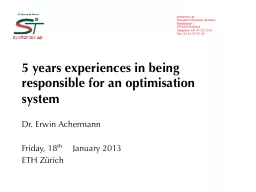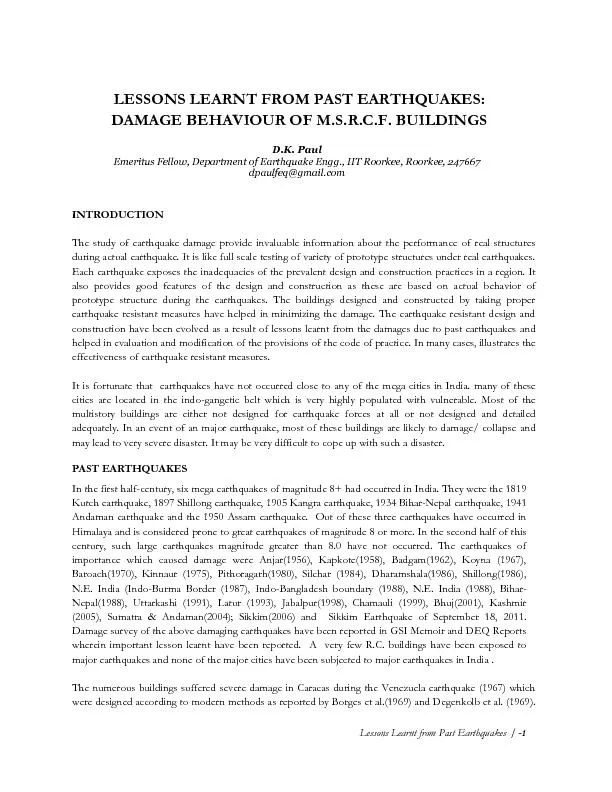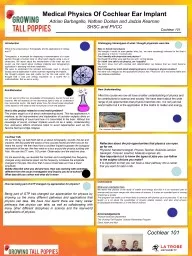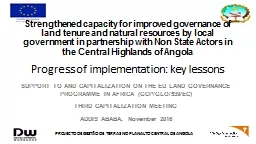WOMEN’S ENTRPRENUERSHIP DEVELOPMENT LESSONS LEARNT
Author : luanne-stotts | Published Date : 2025-06-23
Description: WOMENS ENTRPRENUERSHIP DEVELOPMENT LESSONS LEARNT AND EXPERIENCES FROM POLICY BY IDA KIGONYAPWIDO MINISTRY OF GENDER LABOUR AND SOCIAL DEVELOPMENT Thursday 15th October 2015 Poortgebouw Leiden 1 2 Women Poverty Women remain the
Presentation Embed Code
Download Presentation
Download
Presentation The PPT/PDF document
"WOMEN’S ENTRPRENUERSHIP DEVELOPMENT LESSONS LEARNT" is the property of its rightful owner.
Permission is granted to download and print the materials on this website for personal, non-commercial use only,
and to display it on your personal computer provided you do not modify the materials and that you retain all
copyright notices contained in the materials. By downloading content from our website, you accept the terms of
this agreement.
Transcript:WOMEN’S ENTRPRENUERSHIP DEVELOPMENT LESSONS LEARNT:
WOMEN’S ENTRPRENUERSHIP DEVELOPMENT LESSONS LEARNT AND EXPERIENCES FROM POLICY BY IDA KIGONYA/PWIDO MINISTRY OF GENDER, LABOUR AND SOCIAL DEVELOPMENT Thursday 15th October, 2015 Poortgebouw, Leiden 1 2 Women & Poverty Women remain the majority of people living in poverty in Uganda living on less than US$1 a day. Other vulnerable groups affected by poverty include; refugees and IDPs, female/child headed households, asset less widows, widowers, the youths, the unemployed particularly females with about 70% engaged in unpaid family work. Women’s lack of access and control over the five assets/resources namely natural, human, financial, physical and social resources continues to be the major cause of poverty. Other structural factors contributing to women’s poverty include; inadequate funding to programs targeting women and; most women are often limited to the lowest paying and most unstable jobs that provide the least employment related benefits. 3 Economy Uganda’s economy is mainly based on subsistence agriculture which is highly vulnerable to climatic changes. Women represent 80% of the agricultural labour force, are responsible for about 80% of the food crop production and continue to contribute about 60% of the labour for cash crop production. Women are increasingly taking up commercial activities where they form 72.4 % in commerce, 63% in services, 60.5% in animal husbandry and 47.7% in manufacturing Women work longer hours (12-18hrs) a day as compared to men (8-10hrs). 4 Women in Business in Uganda Available data indicates that one million persons were employed by the private sector in 2010/2011 compared to nearly 450 thousand in 2001. Businesses in the Trade sector continue to employ the majority where nearly 5 out of every 10 people are in the Trade sector. A majority of the employees (55%) are males. The male employees dominate in most sectors especially Business services (74%), Manufacturing (74%), Agriculture (79%). Females dominate employment in Hotels and Restaurants (70%), Education and Health (51%). 5 The Trade Sector remains the leading sector with 61% of the total businesses, followed by hotels and Restaurants with 14%. 98% of the businesses are owned by Ugandans. It is estimated that at least 43.7% of Medium and Small Enterprises (MSEs) are owned and operated by women. Medium and Small Enterprises contribute 90% of the private sector production, a source of new jobs and an income generation for the poor majority of whom are women. 29.50% of women in business in Uganda are in exports. In 2007, informal














